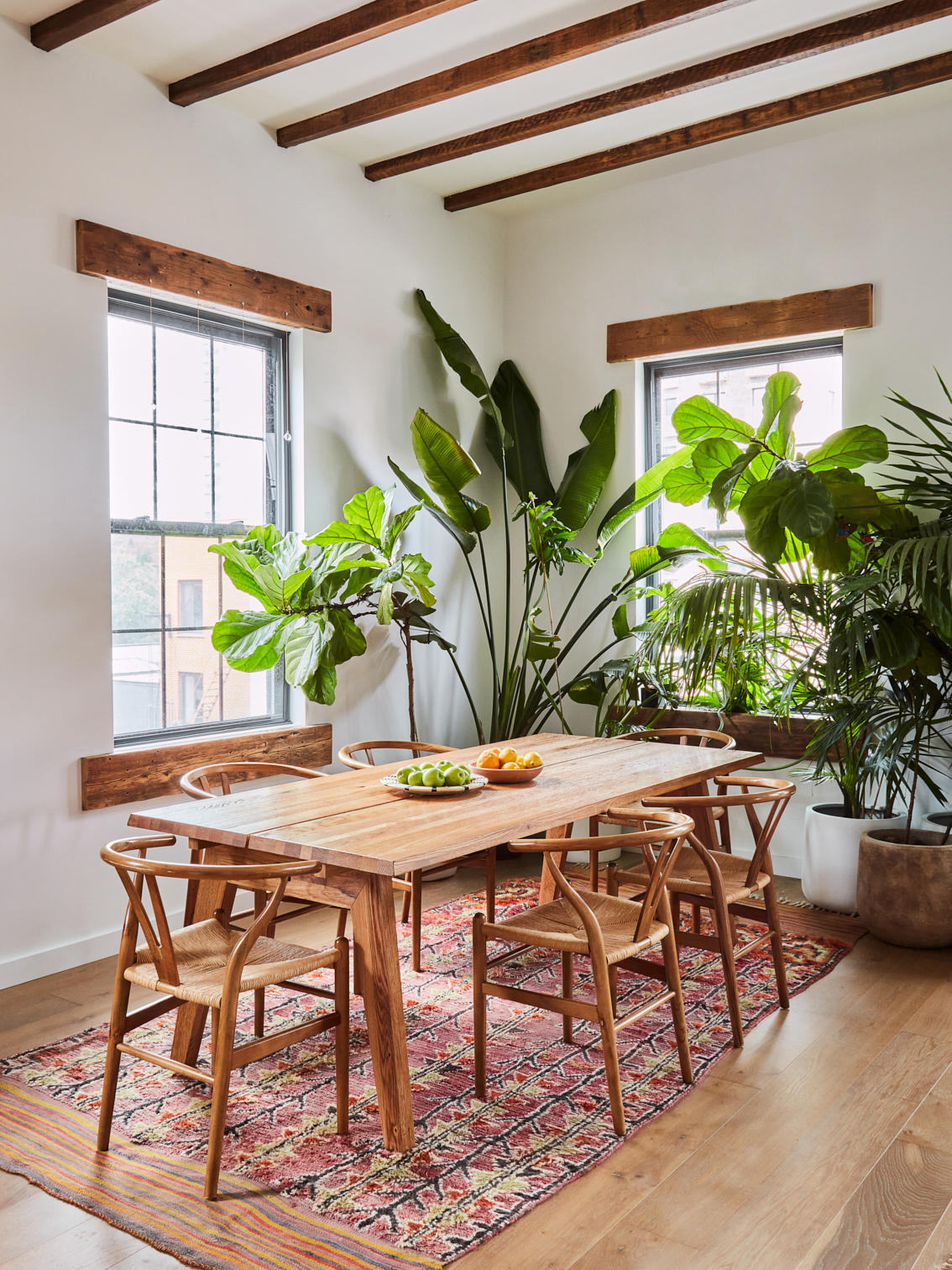We may earn revenue from the products available on this page and participate in affiliate programs.
Allow me to state the obvious: Moving is stressful, even if you’re only going as far as down the street. Because it really doesn’t matter how many miles away your next home may be from your last, the truth remains that you still have to pack up everything—including your plants.
Unlike plates and pillows, greenery is living, so it needs special care for a move, and there are some things you should keep in mind before hauling your beloved olive tree across the country. We asked three plant experts for their advice on how to move plants, and here’s what they shared.
First, Make an Edit

They call it plant parenting for a reason—but who can choose among their children? That said, if you are moving to a smaller space or a home with less natural light, you might have to sell or donate some of your greenery. To make an edit, keep in mind the distance and duration of your move. “If you’re staying local, or driving within a few hours, you can usually plan to keep all of your plants,” says J’Maica Thomas of Blk Girls Green House in Oakland, California. But if you’re thinking of shipping them to your next location, just know that they’re less likely to survive that kind of journey, so consider giving them to a friend. (You can always visit!)
Then again: “If the plant is sentimental to you—keep it,” says August Laska of The Old Yew in Manhattan. And if you do plan to make the move with it, here’s how to pack it.
How to Move Small Plants

Keep your smaller plants (6 to 8 inches tall) in their pots for moving day, otherwise you risk causing them stress—more than they’ll already be getting by being transported to a different home. If your new place is just a short car ride away, you don’t need to do any intricate packing; just make sure they’re arranged in a way that they won’t break, like in a cardboard box or plastic bin, suggests Allison Futeral, owner of Crimson Horticultural Rarities in Oakland, California.
If there’s a moving truck and a days-long journey in their future, potted greenery should go in a cardboard box poked with holes or a plastic bin with the top off. “Either option is fine, as long as there’s proper ventilation and plants have been watered/drained ahead of time,” says Thomas. “If they’re still a bit wet, they’ll soak through the cardboard and it will likely become soggy and less stable.”
How to Move Big Plants and Trees

For trees and bigger plants, cover the top of the soil with crumbled packing paper, then use packing tape across the diameter of the pot to secure the paper in place, suggest Laska and Thomas. Seal it all off with plastic wrap around, over, and across the rim of the pot so that it’s totally sealed and no soil will spill, even if you need to lean the plant on its side during transport.
To help physically move them, you might need a dolly or cart, and here’s a trick that will make the whole process easier: “Avoid watering your plants for a few days before your move,” says Laska. “You want them to be as light as possible. Once you’ve taken the plants out of the box at your new place, give them a good, thorough watering so they have an easier time adjusting.”
Finally, Follow the Light

It’s okay if your greenery doesn’t get light for a few days or so inside of a moving truck, but make sure to place them near the door (in other words, put them in last) so they’re the first things you unpack.
The one thing more important than light is temperature. “You want to keep your plants close to 68 to 72 degrees, but if you have to expose them to colder or hotter temperatures, do this for as short a time as possible,” explains Laska. (Futeral even suggests putting heating pads next to your plants if you know they’re going to be left in chilly temperatures.) How cold is too cold? “If you’re cold, your plants are cold,” Laska says.
Once you’ve moved your potted plants to their new forever home, remember that they’ll need some time to acclimate. “Give them some time to adjust,” says Laska. “It’s okay if they lose some leaves in the first few weeks. They will usually bounce back with continued care.”

